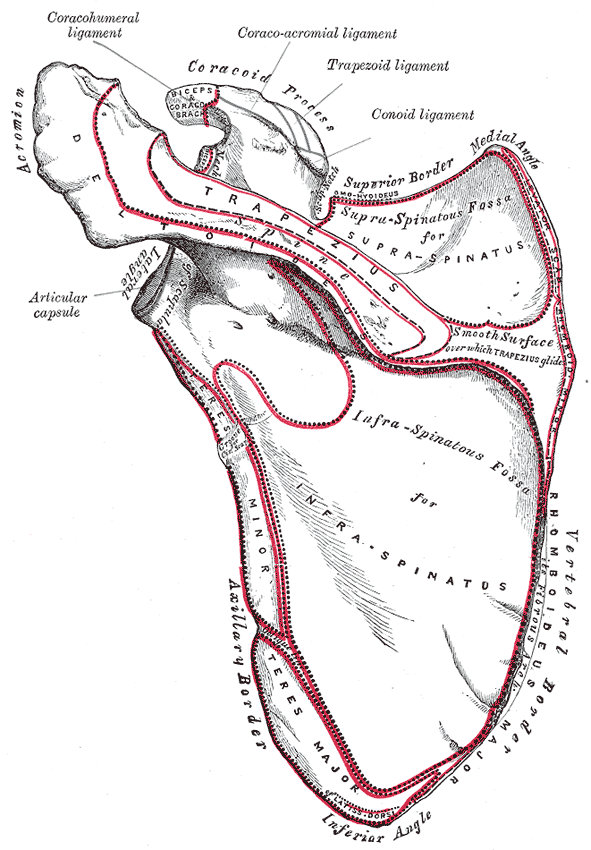Levator Scapulae
| Muscle | Origin | Insertion | Innervation | Action |
|---|---|---|---|---|
| Levator scapulae | C1-C4 TP | Superior angle of Scapula | Dorsal scapular n. Cervical spinal nn. C3 - C4 |
Scapula: Elevation, Downward rotation Cervical: I/L sidebend |
Overview
The levator scapulae is a long and slender muscle. Although the levator scapulae is geographically associated with the muscles of the back, it is functionally more similar to the scapular muscles such as the rhomboid major, minor, and serratus anterior6.
Origin
TP C1-C47
Insertion
Superior angle of the scapula7
Innervation
Action
The levator scapula coactivates with the scapulothoracic upward rotators to counter eachother’s frontal plane rotation and to result in pure elevation6.
Notes
Paralysis
Paralysis of the levator scapulae will result in a sagging shoulder girdle6.
Stretch
“Nose to opposite armpit”
- Contralateral rotation
- Contralateral Sidebend
References
1.
Gray H. Anatomy of the Human Body. 20th ed. (Lewis WH, ed.). Lea & Febiger; 1918. https://www.bartleby.com/107/
2.
Betts JG, Blaker W. Openstax Anatomy and Physiology. 2nd ed. OpenStax; 2022. https://openstax.org/details/books/anatomy-and-physiology-2e/?Book%20details
3.
Donnelly JM, Simons DG, eds. Travell, Simons & Simons’ Myofascial Pain and Dysfunction: The Trigger Point Manual. Third edition. Wolters Kluwer Health; 2019.
4.
Finando D, Finando SJ, Finando D. Trigger Point Therapy for Myofascial Pain: The Practice of Informed Touch. Healing Arts Press; 2005.
5.
Weinstock D. NeuroKinetic Therapy: An Innovative Approach to Manual Muscle Testing. North Atlantic Books; 2010.
6.
Jones B. B Project Foundations. b Project; 2025.
7.
Gilroy AM, MacPherson BR, Wikenheiser JC, Voll MM, Wesker K, Schünke M, eds. Atlas of Anatomy. 4th ed. Thieme; 2020.
Citation
For attribution, please cite this work as:
Yomogida N, Kerstein C. Levator Scapulae. https://yomokerst.com/The
Archive/Anatomy/Skeletal Muscles/Upper Limb Muscles/Axioappendicular
Posterior Muscles/levator_scapulae.html



